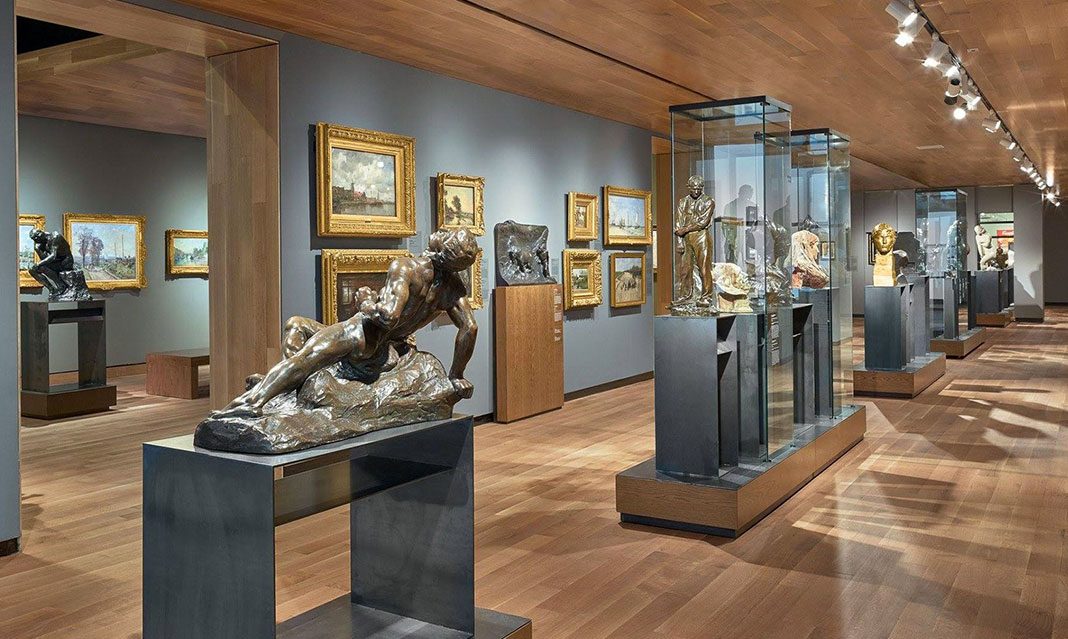On Sherbrooke street, a crisp rectangular building marks one of Canada’s largest and prominent art museums. The Montreal Museum of Fine Arts is almost inconspicuous in its appearance. Built with gray slabs of rocks and slanting frontal windows, the museum’s outward architectural design is simple. On the inside, however, the museum’s spectacles are impressive. Currently, MMFA boasts five pavilions and houses approximately 44,000 works of art.
Concerning MMFA’s attempts to attract an audience, Andrew Nguyen, a fourth-year commerce student, noted that the composition of attendees are varied. “It’s a nice place that allows the younger generation to be in touch with the fine arts. There’s multiple levels and multiple themes,” Nguyen continued, “There’s many levels dividing up multiple themes, showing the different interpretations of art from past to present.”
One of the exhibits, housed in the Michal and Renata Pavilion for Peace, displays “Early to Modern International Art.” In fact, MMFA’s website states that the museum holds one of the three largest international art collections in Canada. Artists featured in this exhibit include, but are not limited to, Pieter Bruegel the Younger, Canaletto, Boucher, Goya, and Octave Tassaert.
The walls in this exhibit are painted dark grey—evoking a somber ambiance that matches the mood of the displayed paintings. On one side, “The Temptation of Saint Hilarion,” painted by Tassaert around 1857, hangs with a gilded gold frame. The style of the work is a blend of romanticism and realism. Using oil on canvas, Tassaert makes lust and carnal desire almost tangible. In the middle, Saint Hilarion, clothed like a Benedictine monk, hunches over. Surrounding him in an arc are a group of scantily clothed women—visually explaining the title of the artwork.
“Lake by Moonlight with Castle on Hill,” painted in 1787 by Joseph Wright of Derby, evokes a similar somber ambiance previously described in Tassaert’s style. Using oil on canvas, as well, Wright’s depiction of a single castle turret overlooking a dimly shimmering lake is forlorn. Wright employs a chiaroscuro effect: the shades of colour used are dull, the sky is painted a pastel blue, the trees are painted a dark green—almost black—shade that casts a pallor over the whole painting.
Underneath, the caption for the painting explains, “[Derby’s] paintings of moonlight owe something to the work of Joseph Vernet, but are more in the realm of scientific observations than romantic descriptions. […] Fascinated by contrasting lighting effects, in the 1780s he executed a number of nocturnal scenes, including this masterful moonlit landscape.”
Yet, the exhibit is lined not only with hanging works of art but sculptures as well. Pierre-Eugene-Emile Hebert’s “Et Toujours! Et Jamais!” or in commonly translated in English as “Forever and ever!” and “Always! Never!” is a bronze sculpture. The Spencer Museum of Art describes the depiction as a “Shrouded skeletal figure who, after rising form the grave, has embraced a figure of a nude young woman whose supple flesh provides a stark contrast to his gaunt, angular limbs.” Interpretations of this work suggest that the shrouded skeletal figure is a symbolic representation of Death and the Maiden. Another interpretation is more mundane—this second interpretation suggests that the shrouded figure is actually the young woman’s lover arising from death.
Other exhibits in the MMFA feature modern and avant-garde art.



